Food for the Soul: A Year of Vermeer

By Nina Heyn — Your Culture Scout
We celebrated the year 2019 as “The Year of da Vinci,” reporting all year long from the groundbreaking exhibition at the Louvre as well as anniversary exhibitions in Italy, Poland, and the Netherlands. We would like to celebrate 2023 as “The Year of Vermeer,” inspired by the upcoming, massive exhibition at the Rijksmuseum in Amsterdam (February 10 through June 4, 2023). This is one of the most ambitious Vermeer exhibitions ever, since the museum is planning to showcase 26 artworks out of about 35 that are indisputably by the artist’s hand. This spring, we will report extensively from that exhibition, which promises to be the most important world art event of the year. Later in 2023, we will showcase some Vermeer paintings that are permanently located in other European cities.
The Rijksmuseum has already announced the nine works that will not be part of the exhibition. In anticipation of the big show, here is a look at those pictures, which will be the grand absentees.
At the top of the list is a picture that no one can view anymore. The Concert, painted around 1663-1666, is a sublime example from the period of Vermeer’s artistic maturity. Isabella Stewart Gardner purchased it in 1892 as one of the first highlights of her collection, which eventually blossomed into her unique museum in Boston. In 1990 this painting, together with 12 other treasures, was stolen from the Isabella Stewart Gardner Museum, and the heist remains the biggest unsolved art robbery of all time. All we have left of this masterpiece are some photos and, for some people, vague memories. People who are 30 years old or younger have never even had a chance to see it.
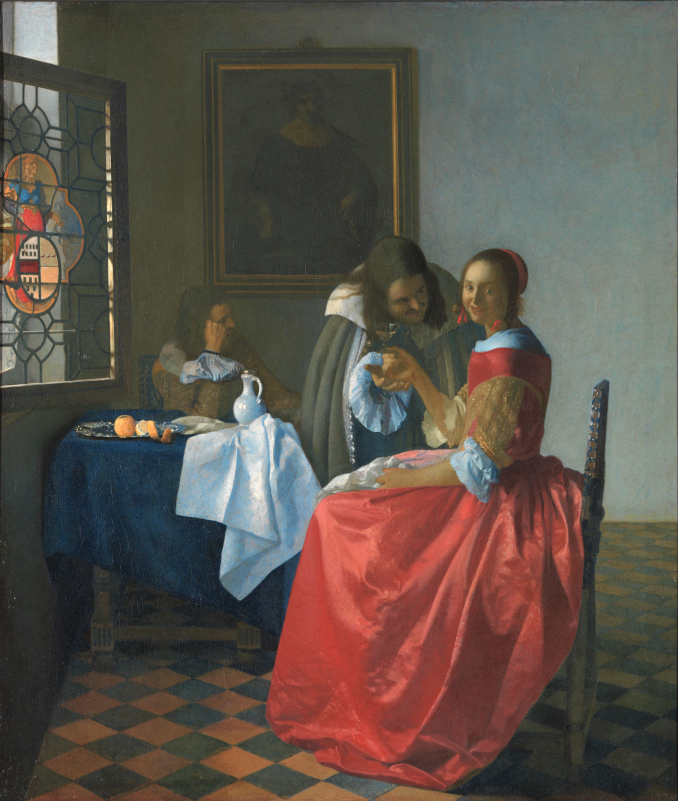
One of the most colorful Vermeer compositions that will not make it to the Amsterdam show is The Girl with a Wine Glass, long admired for its rendering of the cinnabar-hued silk dress. The painting belongs to a collection in Braunschweig (Brunswick) in northern Germany. Vermeer painted this scene for Pieter Claesz. van Ruijven, who was probably his only constant patron. The artist took up the theme of a courtship, or at least an interaction, between a cavalier and a young woman in three other works as well (Girl Interrupted at Her Music, The Glass of Wine, and Cavalier and Young Woman). The Girl with a Wine Glass is perhaps not the scene of a courtship of equals—the woman’s bold laugh and direct gaze would have marked her in the eyes of her contemporaries as an “easy woman,” and the presence of two men in the room strengthen the idea that this is not a private house but a very public one. Such scenes of “easy virtue” (for example, depicting procuresses or tavern scenes) were popular genre scenes, and Vermeer may have painted it as a specific thematic commission. He made it his own, however, by placing the figures in a clean-lined interior, enlivened by the complex image of a stained-glass window. The stained glass design repeats the primary colors of the scene—the vivid red of the dress, the yellow of the floor, and the dark blue of the table coverings.
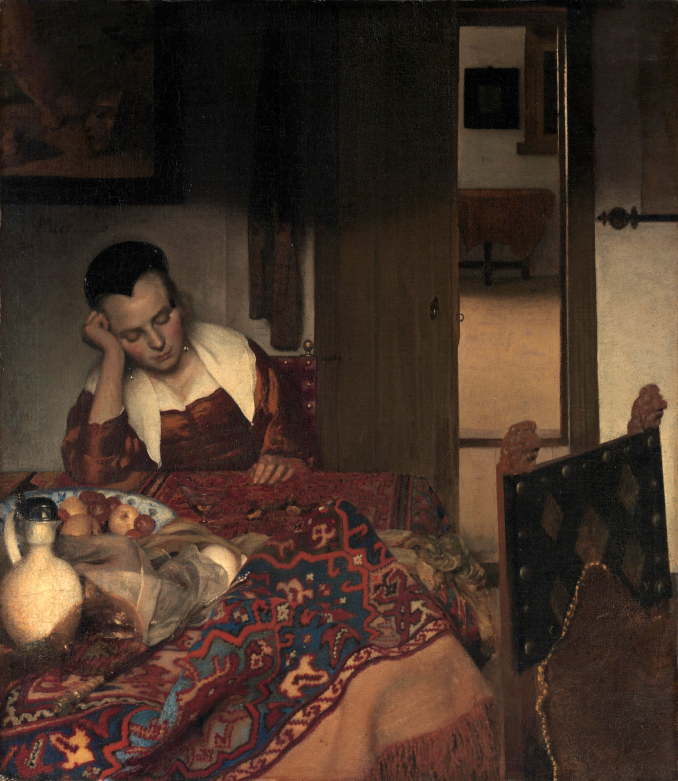
New York’s Metropolitan Museum of Art owns an impressive five Vermeers. In 2018, the museum rehung them, placing all five paintings together and making it easier to appreciate the artist’s style and artistic development. The MET is lending to the Rijks two pictures: Allegory of the Catholic Faith and Woman with a Lute. Let’s take a look at the three that will remain in New York.
A Maid Asleep has been extensively analyzed, including with X-rays, revealing that there was originally a figure in the background and a dog in the front (which the artist eventually painted over). These original compositional ideas have made some art critics treat this as a story of a woman waiting for a lover. It also has often been described as a genre scene with an indolent servant who falls asleep after drinking wine. Vermeer’s contemporaries, such as Nicolas Maes, painted similarly themed pictures, and in a Protestant country this was a common, moralizing theme of admonishment. However, if we look at this picture in its final form, especially viewing it in our century when criticizing slovenly servants is no longer an issue, all we can see is a young woman napping, fully dressed, at a table. If she is indeed a maid, then perhaps she is simply a very tired servant who is catching a wink before or after everyone else is about the house. This is the beauty of so many Vermeer pictures—he does not commit himself (or us, the viewers) to any decisive interpretations. He creates a scene without cramming the meaning into us; maybe we are seeing a lazy or drunk maid, or maybe we should just sympathize with an overworked woman. I certainly prefer the second interpretation.
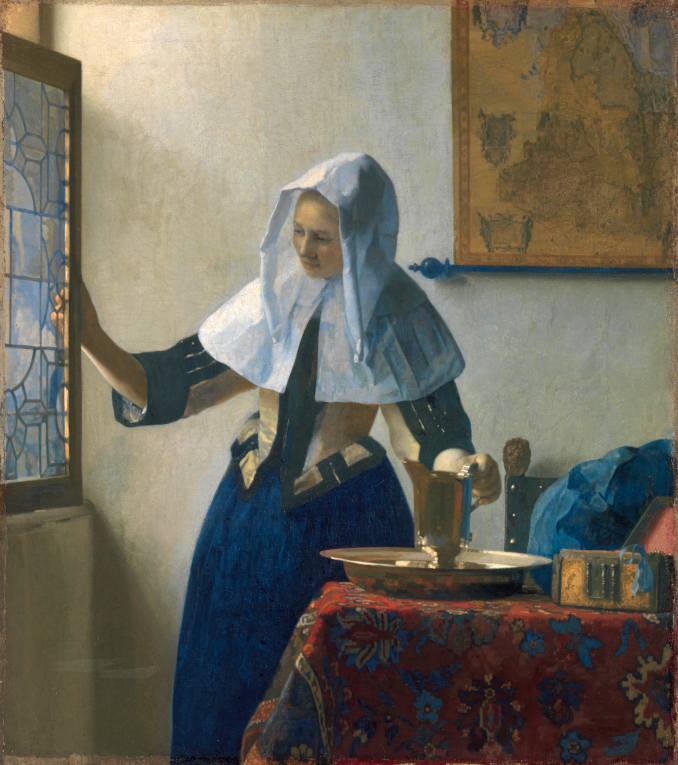
Imagine a summer morning in Delft. It’s time to open the window and let in some fresh air, and it’s time to wash your face—but if this is the 17th century and you are a woman, then washing your face involves pouring water from a pitcher into a bowl, and you need to protect your nice dress with a piece of white linen. This is the scene of one of Vermeer’s quiet masterpieces called Young Woman with a Water Pitcher. The religious and moral point of view of the 17th century Dutch Republic had raised the genre of domestic scenes from simple decoration to a declaration of spiritual values. Vermeer’s eye raised the domestic scenes from genre painting to contemplative art that outdistanced his contemporaries. In this painting, there is peace, contentment, and purpose, all bathed in golden light.
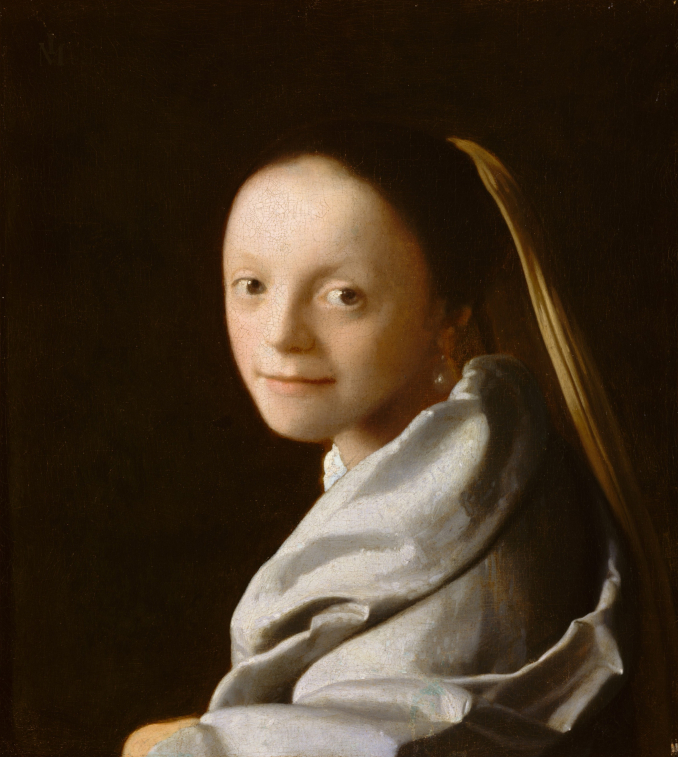
The MET’s Study of a Young Woman is a portrait similar in size, dating, and pose to the most famous of all Vermeers: Girl with a Pearl Earring. In later centuries, such portraits could be painted as stand-alone depictions of models, but in Vermeer’s time, the lack of context (there is only a black background), the exotic silk drape and head scarf, and the “close-up of a face” would have relegated such a picture to the lesser genre of tronies (character head studies). And yet, together with the celebrated pearl picture, these are delicate and alluring portrayals of young Delft women of so many centuries ago.
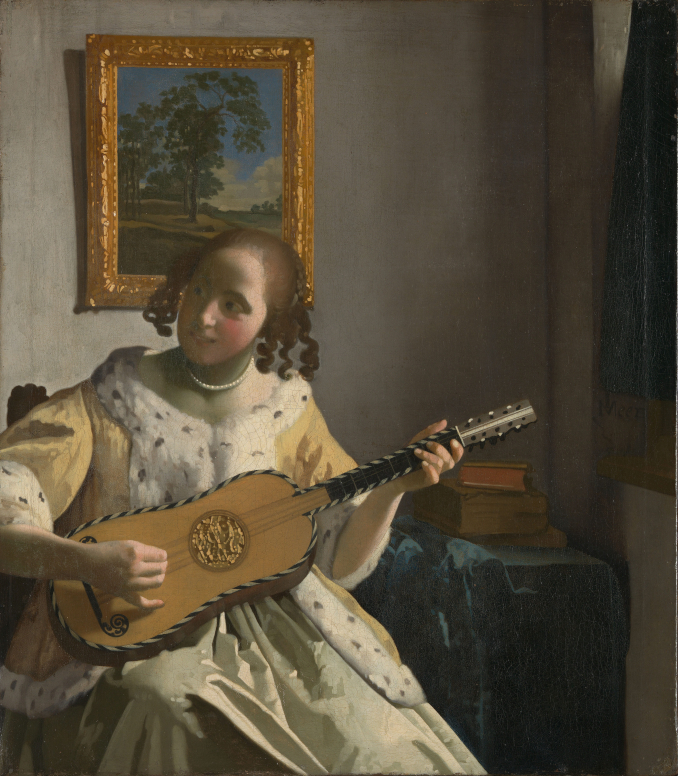
Vermeer painted A Guitar Player late in his career. His model is, as usual, a well-dressed, beautiful young woman, but unlike his other portrayals, this woman shows a smiling face. In a way, this late picture is a synthesis of his ideas for portraits. We no longer see the person with whom she is interacting (no courting cavaliers nor attentive maids), and this is not a contemplative profile—the woman is just singing, playing, and smiling. She may be moving and performing for someone, but the artist’s attention is on her alone.
A Guitar Player has the dubious distinction of being one of three Vermeer artworks to have been stolen but later recovered. In 1974, robbers brazenly stole this canvas from a historic mansion after taking a sledgehammer to the building’s shutters. Soon thereafter, the painting became the subject of a ransom demand to distribute food worth $1.1 million to the population of the newly decolonized republic of Grenada. It eventually was recovered in a London cemetery, damp but not terribly damaged.
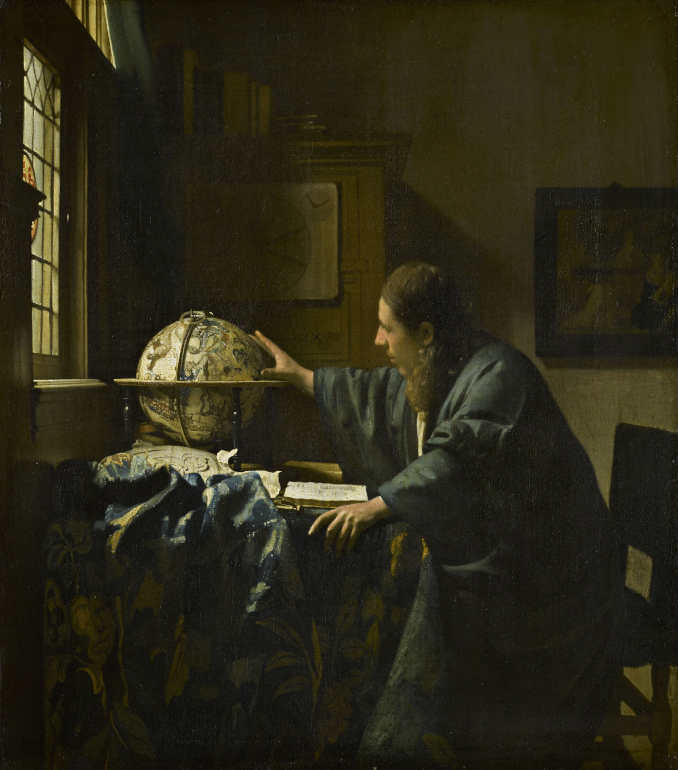
Vermeer painted two “scientist portraits” featuring the same long-jawed model in a similar pose and with similar props. The later picture, called The Geographer, will be included in the Amsterdam exhibition, but the earlier portrait called The Astronomer will not. Art historians have speculated that these could be portraits of Antonie van Leeuwenhoek, a famed scientist who lived in Delft at the same time as Vermeer and who is considered “the father of microbiology” for his pioneering use of the microscope and study of optics. Even if he actually knew Vermeer well, however, the theory of him being portrayed in those two paintings is now mostly rejected in favor of some unknown model. In any case, what Vermeer addressed in the two pictures is the importance of scientific research—an idea vital to Dutch citizens whose prosperity and naval dominance depended on geographical and astronomical exploration.
There are two more exquisite Vermeer works that will not travel to Amsterdam, but I am planning to make a pilgrimage to their locations and write about them later in the year: The Art of Painting, which resides in Vienna, and Lady at the Virginal with a Gentleman, the pride of the Royal Collection at Buckingham Palace in London.
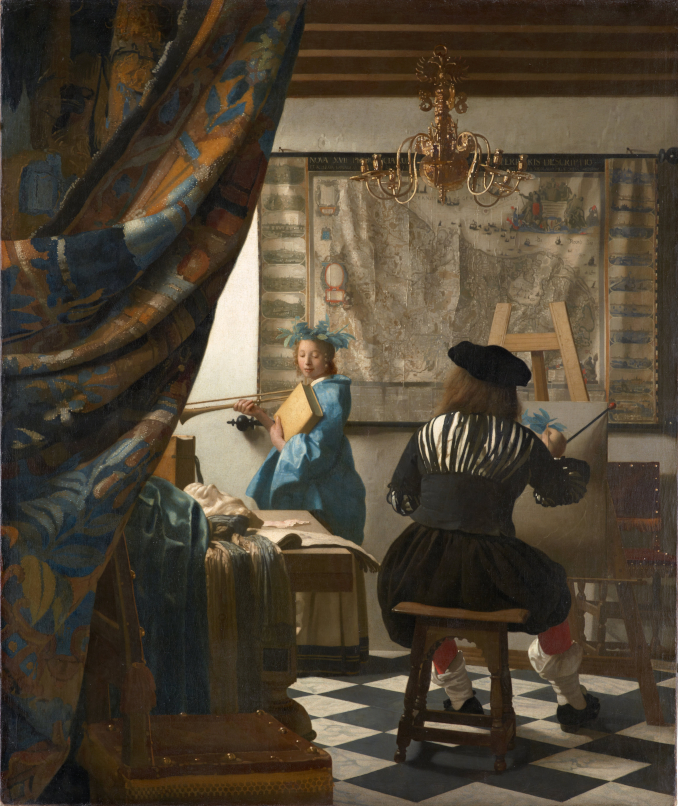
Let “The Year of Vermeer” begin!
